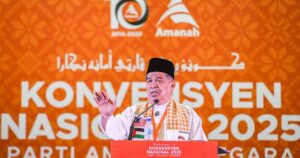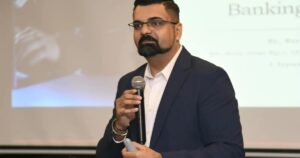
On the morning of Aug 4, 1975, Sukdave Singh stepped into the unknown.
He had come to the American International Assurance (AIA) building on Jalan Ampang to submit a medical certificate.
Minutes later, he was shot in the face.
Just like that, Sukdave became the first casualty of Malaysia’s first international terrorist siege.
It was a headline-grabbing assault by the Japanese Red Army (JRA) that brought the nation face-to-face with foreign extremism.

The bullet tore beneath his right eye and exited through the back of his head.
He lived. But what followed was far more lasting than the wound.
“I feel like I was left behind — forgotten,” he says quietly, seated in the dim living room of his termite-ravaged home in Taman Sri Ampang.
A man, a moment, a nation tested
At 29, Sukdave was a security guard who had served AIA since 1966. That morning, when told there was a “robbery” upstairs, he did what came naturally — he went to check.
He didn’t know five armed JRA men in business suits had stormed the ninth floor, taking 53 hostages, staff from the US and Swedish embassies and other firms.

They were armed with machine guns, grenades, and a demand: the release of seven imprisoned comrades in Japan.
“I took the lift. When the door opened, I saw men with machine guns and covered faces. Then I felt a hot blow to my face.”
The shot destroyed his right eye, shattered his balance, and left his jaw permanently misaligned.
The bullet lodged in the wall of the elevator where he’d poked his turbaned head out to gauge the chaos.
For nearly an hour, Sukdave bled while the hostage-taking unfolded.
No ambulance came until police flagged one down, already en route to hospital with another patient, and insisted it detour.
He spent 75 days in hospital, undergoing facial reconstruction. He recovered, mostly. But the blackouts and headaches stayed. So did the memory.
He postponed his wedding to Kuldip Kaur, marrying her months later on her birthday. She remained his rock until her passing in 2022.
A nation moved on, Sukdave didn’t
The siege lasted several days. The JRA militants were eventually flown to Libya, along with two senior Malaysian officials who volunteered to be exchanged for the hostages.
Deputy transport minister Ramli Omar and home ministry secretary-general Osman Samsuddin Cassim rightly returned to applause, medals, and receptions.
Sukdave got a plaque. A thank-you letter. A watch.
“We were just… filed away,” he said.
Forgotten faces of the militant attack
He wasn’t alone. Two federal reserve unit constables, V Amurthalingam and Ku Ahmad Ku Razak, were also shot during the incident.
Sukdave said he remembers Amurthalingam being shot in the jaw during a gunfight on the ninth floor.
Ku Ahmad was hit in the thigh after taking over a spot in the car park just vacated by a US embassy photographer.

The photographer had aimed a zoom lens at the building, perhaps mistaken for a weapon by the gunmen.
Like Sukdave, their names faded from public memory.

He remains bitter that none of the three were compensated by the governments of Malaysia, Japan, the United States or Sweden.
On March 3, 1976, they received a pewter plaque and a gallantry award from the Malaysian Employees Association of the US Embassy.
Sukdave’s citation read: “For outstanding bravery, risking his own life for the safety of the entire occupants of the AIA building in attempting to arrest the Japanese Red Army invaders on the ninth floor.”
No medals, just termites
Sukdave remained with AIA, later shifting to an administrative role until his retirement in 2004.
In 2020, following an FMT news report that resurfaced his story, AIA and several well-wishers offered support.
That helped pay for cataract surgery on his only working eye, which had been blurry for six years.
Sukdave, who turns 79 on Aug 30, no longer asks for money. He wants help to repair his crumbling home, and for people to remember what he did.
“I miss cooking at the gurdwara,” he said of his time volunteering at Gurdwara Sahib Ampang. “It gave me purpose. These days, I try not to be a burden.”
His two sons and two daughters have their own family obligations, caring for his seven grandchildren.
What he bore, what we forgot
In worn-out folders and plastic bags, he keeps newspaper clippings, photos, and tokens from the siege, memories of a moment that changed him, and changed the country.
His collection also documents the JRA’s history, a group that fought for a global communist revolution, earning infamy in 1972 when its commandos killed 24 and wounded 76 at Lod Airport in Tel Aviv.
He recalls Japanese-speaking headmaster Ken Appadurai, from Johol near Seremban, who posed as a bus conductor to help negotiate with the militants.
“Everyone played a role. Some got medals. Others got silence.”
What would bring him peace?
“Just to be remembered. Just someone saying, ‘We haven’t forgotten what you did.’”
A bullet healed, the silence didn’t
Fifty years have passed since the event that drew global attention and tested the resolve of a young nation.
But we still struggle to honour those who act without expectation of glory.

“Courage isn’t about medals,” Sukdave said. “It’s about doing what’s right when it’s hardest.”
That’s what he did that morning in 1975.
He didn’t walk into the AIA building looking to be a hero.
But 50 years on, it’s time we finally see him as one.






